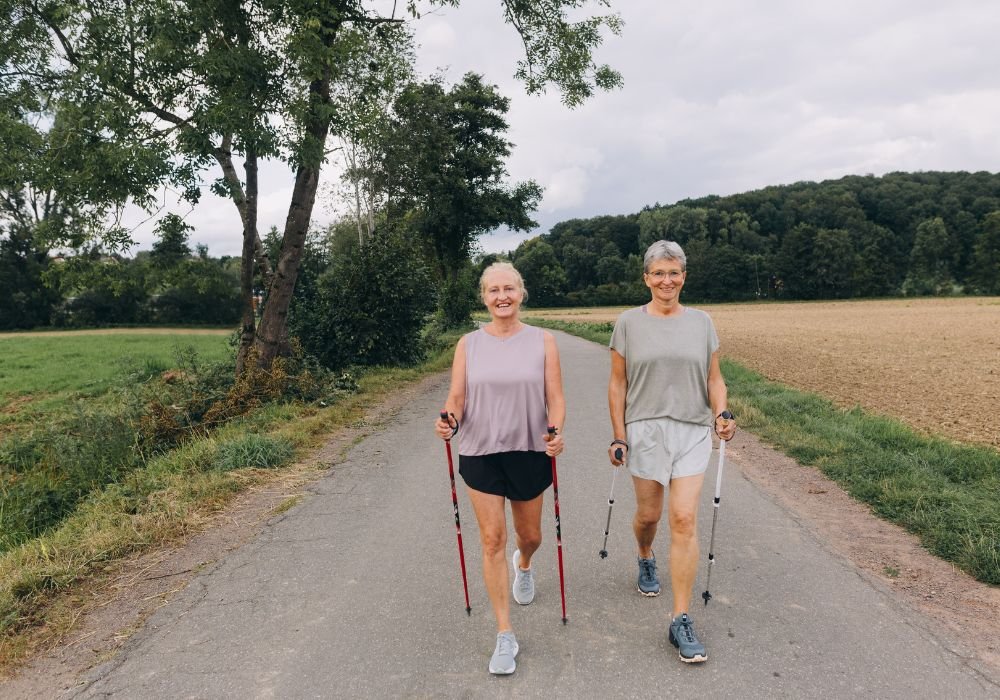Smart Travel for Seniors: Comfort, Access, and Joy Combined

Last Updated on July 30, 2025 by Rose Ann
Accessible travel for seniors is on the rise as more older adults seek safe and convenient ways to explore new places. Many seniors face unique challenges that require careful planning and specialized advice. This guide offers practical tips and resources to help seniors navigate accessible travel options with confidence. Readers will discover valuable insights on planning, health considerations, and tools to ensure comfortable journeys.
Making Travel Easier: A Guide to Accessible Travel for Seniors
Accessible travel for seniors allows older travelers to experience new adventures without compromise. This section explores the meaning of accessible travel for seniors and explains how it can improve independence and enhance quality of life.
Defining Accessible Travel for Seniors
Accessible travel for seniors ensures that older adults can explore new destinations comfortably and safely, regardless of mobility limitations or health concerns. It involves travel services, accommodations, and transportation specifically designed to support senior travelers. Key features include step-free hotel access, wheelchair-friendly transport options, and guided tours with mobility assistance. Many airlines, cruise lines, and travel agencies now offer tailored services, such as priority boarding, accessible seating, and in-room medical equipment accommodations. The goal is to provide a seamless travel experience that prioritizes both independence and ease of movement, allowing seniors to enjoy their journeys without unnecessary obstacles.
The Importance of Accessible Travel
Accessible travel ensures that seniors can explore new destinations without physical limitations becoming a barrier. Many older travelers face challenges such as reduced mobility, chronic health conditions, or the need for specialized accommodations, making traditional travel options difficult. By offering wheelchair-friendly transportation, senior-focused tour packages, and accessible lodging, travel providers help older adults maintain their independence and confidence while on the move.
Beyond convenience, accessible travel promotes inclusivity, allowing seniors to enjoy cultural experiences, visit loved ones, or embark on long-awaited adventures without unnecessary stress. With proper planning and the right services, senior travel becomes not just possible, but truly enjoyable.
Benefits of Accessible Travel for Seniors
Accessible travel for seniors offers numerous benefits. Addressing potential obstacles promotes confidence and reassurance among older travelers. Seniors can enjoy a worry-free experience knowing that accommodations and transport options are tailored to their needs.
Enhanced accessibility improves safety and comfort, reducing the risk of injury or stress during travel. Furthermore, accessible travel encourages social engagement by creating environments where seniors can interact and share experiences with fellow travelers. These benefits contribute to an overall improved quality of life.

Challenges and Considerations
Despite the many benefits, accessible travel for seniors also presents challenges that need careful planning. Older travelers might face issues such as limited mobility or chronic health conditions that require special attention. It is essential for travel providers to recognize these challenges and offer flexible, adaptive solutions. Seniors should research destinations thoroughly to ensure that facilities meet their specific requirements. Awareness of potential obstacles and proactive planning can help overcome many of these barriers. This approach fosters a smoother travel experience.
Practical Tips for Enhancing Accessible Travel
When planning accessible travel for seniors, it is important to prioritize both convenience and safety. Consider destinations renowned for their accessibility features and senior-friendly services. Check online reviews and travel forums for honest feedback from other senior travelers.
Always contact hotels or tour operators to confirm that they can accommodate your needs. A well-structured itinerary and clear communication with service providers can prevent last-minute surprises. Preparing in advance ensures that every aspect of the trip is carefully thought out, making the journey more enjoyable and stress-free.
Common Challenges
Common Challenges for Accessible Travel for Seniors may seem straightforward, but several obstacles can complicate a trip. Many seniors encounter issues that require thoughtful planning and adaptive strategies to ensure a smooth travel experience.
Mobility and Physical Limitations
Mobility issues are among the most common challenges for seniors on the road. Many older travelers experience reduced stamina and difficulties walking long distances or climbing stairs. This can limit destination choices and the activities available during a trip. Facilities may sometimes lack adequate ramps, elevators, or other necessary features to support mobility aids.
Seniors should research destinations thoroughly and verify that transportation hubs, tourist attractions, and accommodations meet their physical needs. Ensuring mobility equipment is in good condition and readily available can significantly ease the journey.
Health Concerns
Health concerns also play a major role in accessible travel for seniors. Many older travelers manage chronic conditions that require regular medication and close monitoring. Traveling to unfamiliar environments can lead to unexpected health challenges.
It becomes essential to plan ahead by researching local healthcare options and keeping an ample supply of medications. In addition, seniors need to account for variations in climate or altitude, which may affect their well-being. Planning for emergencies, including knowing where the nearest medical facility is located, helps reduce stress and ensures a safer trip.
Transportation Barriers
Transportation can present unique challenges during accessible travel for seniors. Many airports, train stations, and bus depots may not offer the level of assistance required for older travelers. Difficulties such as long walks between terminals or inadequate seating arrangements can add to the stress of travel.
Accessible transport options are not always available on every route or in every destination. Seniors should contact service providers in advance to confirm that assistance is available for boarding, disembarking, and handling luggage. Making these inquiries can help in choosing transportation that aligns with their specific accessibility needs.
Accommodation and Service Gaps
Finding suitable accommodations remains a significant challenge for seniors who want to travel more easily. Some hotels or rental properties may lack essential features such as walk-in showers, handrails, or step-free access. Service gaps are common when staff are not trained to support seniors or address their specific requirements. It is important to communicate directly with hotels or property managers about accessibility needs before booking. Detailed inquiries and confirmation of facilities can prevent potential issues during the stay. This extra step in planning can contribute to a more comfortable and stress-free experience.
Communication and Information Barriers
Access to reliable travel information is crucial for planning accessible travel. Seniors may find it challenging to locate clear details about the accessibility of attractions, accommodations, or local transport options. Vague descriptions or inconsistent labeling in travel resources can lead to misunderstandings about a destination’s suitability. To overcome these hurdles, seniors should reach out to local tourism boards, consult specialized websites, and engage with travel communities. Access to accurate information allows for better decision-making and helps set realistic expectations for a trip.
Environmental and Infrastructure Issues
Environmental factors and infrastructure can also impede accessible travel for seniors. Uneven pavements, steep inclines, and poorly maintained public facilities increase the risk of injury. Such challenges require seniors to exercise extra caution and may even limit the areas they can explore comfortably. Choosing destinations with well-maintained, senior-friendly infrastructure can mitigate these risks. A careful review of travel routes and local conditions is a proactive measure to ensure safety and enjoyment during a trip.

Planning and Preparation
Planning and preparation are essential for accessible travel for seniors. This section provides practical tips and strategies to ensure every aspect of your journey is carefully designed to meet your unique needs.
Setting Clear Travel Goals
Begin by identifying what you want to achieve on your trip. Define your priorities, whether it’s relaxation, cultural exploration, or light adventure. Consider how your mobility, energy levels, and health concerns might influence your daily activities. Clear travel goals guide your destination choice and activity planning. They help you filter out options that may not be suitable and focus on experiences that match your abilities and interests.
Crafting a Detailed Itinerary
A well-structured itinerary is key to reducing travel-related stress. Break your journey into manageable segments and plan for regular rest breaks. Outline your daily activities, including sightseeing, meals, and downtime. A detailed itinerary gives you a clear overview of your trip and helps you anticipate transitions between locations. This planning also allows for flexibility if you need to slow down or change plans unexpectedly.
Booking Accessible Accommodations
Choosing the right place to stay can significantly improve your travel experience. Research accommodations that offer senior-friendly features such as step-free access, walk-in showers, and handrails. Contact hotels or rental services directly to confirm the availability of these features. Read recent reviews to learn about other seniors’ experiences with the property. Confirming accessibility details before booking can prevent surprises and ensure you have a comfortable, safe environment to return to each day.
Arranging Transportation
Transportation is a critical component of accessible travel planning. Look into airlines, train services, and local transit options supporting seniors. Contact service providers in advance to discuss any assistance you might need during boarding or disembarking. Confirm whether vehicles have features like low steps or additional space for mobility aids. Adequate transportation planning minimizes the stress of moving from one place to another and ensures you have the necessary support throughout your journey.

Preparing Essential Documents and Medications
It’s important to organize your essential documents well before departure. Keep copies of your passport, travel insurance, medical records, and identification in a secure, easily accessible location. Prepare an ample supply of medications and include dosage instructions along with your doctor’s contact information. Having these items organized and accessible helps you manage any unexpected health issues and simplifies check-ins at accommodations or medical facilities if needed.
Engaging with Service Providers
Effective communication with travel service providers is crucial for accessible travel. Contact travel agents, tour operators, or local guides to discuss your specific needs. Ask detailed questions about accessibility features, available assistance, and any additional support they can offer. Clear communication helps set expectations and ensures that your requirements are understood and met before you arrive. This proactive approach builds confidence and contributes to a smoother travel experience.
Reviewing Travel Insurance and Emergency Contacts
Review your travel insurance policy to ensure it covers potential health emergencies and any pre-existing conditions. Keep a list of local healthcare facilities and emergency contacts at your destination. This extra preparation layer provides peace of mind and can be critical in unexpected situations. Having insurance and emergency details readily available can reduce stress and help you navigate any challenges during your journey.
Focusing on detailed planning and preparation can help seniors overcome many common travel challenges. A proactive approach builds confidence and allows you to enjoy your travel experience fully. Thoughtful planning creates a strong foundation for a safe, comfortable, and rewarding journey.
Health and Safety Considerations
Accessible travel for seniors demands careful attention to both health and safety. Preparing in advance and having a clear plan can help seniors enjoy their trips with confidence and peace of mind. The following sections address essential aspects of health and safety for seniors on the move.
Prioritizing Health Before Departure
A thorough medical check-up should come before any travel plans. Seniors must discuss their itinerary with their healthcare provider and review any potential risks associated with their destination. It is wise to update vaccinations and adjust medications as needed. This proactive approach builds confidence and minimizes unexpected health issues while traveling. Being well-prepared also means knowing your limits and understanding how your health may change in a new environment.
Managing Medications and Medical Documents
Handling medications and medical documents correctly is vital for a worry-free trip. Seniors should pack enough medication for the entire journey and bring extras in case of delays. Medications must remain in their original containers with clear labels and instructions.
Keeping copies of prescriptions and medical records is important for emergencies or visits to local healthcare providers. This level of organization ensures that seniors have everything needed to manage their health, even when far from home.
Selecting Travel Insurance for Extra Security
Travel insurance is a critical component of health and safety considerations. Look for a policy that covers pre-existing conditions and offers comprehensive medical support abroad. A robust travel insurance plan provides financial protection if unexpected health issues arise during the trip. It is important to review policy details carefully and confirm that the coverage includes the destination region. Having the right travel insurance in place allows seniors to focus on the joys of travel while minimizing concerns about potential healthcare costs.
Consider services like Travelexinsurance that offer a wide range of coverage for seniors. Travelex offer coverage for lost baggages, cancelled trips, emergency evacuation, and much more.
Staying Safe During Your Journey
Safety should be a constant focus during accessible travel. Seniors need to assess the physical environment of their chosen destinations. It is important to select accommodations that offer features such as step-free access, handrails, and non-slip flooring. Seniors should also inquire about local transportation options that cater to mobility needs and provide adequate assistance during boarding and disembarking. Choosing senior-friendly venues and services reduces the risk of injury and helps create a more relaxed travel experience.
Preparing for Emergencies and Staying Connected
Being prepared for emergencies is essential to maintaining a stress-free travel experience. Research local hospitals, clinics, and pharmacies before departure and note their contact information. Keep a list of emergency contacts both at home and in the destination area. Using technology, such as smartphone apps, can help locate nearby medical facilities quickly. It is also wise to stay in regular contact with family or friends throughout the journey. These measures form a reliable safety net that can be invaluable during unexpected situations.
In summary, paying close attention to health and safety considerations is key for accessible travel for seniors. Prioritizing a medical check-up, managing medications effectively, securing comprehensive travel insurance, and preparing for emergencies all contribute to a secure and enjoyable trip. By addressing these elements before and during the journey, seniors can travel with the confidence that their health and well-being are well cared for.

In-Depth Accessibility Reviews for Popular Travel Destinations
Traveling as a senior should be stress-free, comfortable, and accessible. However, not all destinations prioritize accessibility. To help seniors choose the best places for their next trip, we’ve reviewed some of the most senior-friendly travel destinations, highlighting their accessibility features, transportation options, and accommodations.
Vienna, Austria – A Model for Accessibility in Europe
Vienna is one of the most accessible cities in the world, with an efficient transportation system and step-free attractions.
- Fully wheelchair-accessible public transport. Trams, buses, and metro stations have ramps and priority seating.
- Barrier-free attractions. The Schönbrunn Palace, Belvedere Museum, and St. Stephen’s Cathedral offer ramps, elevators, and accessible pathways.
- Smooth sidewalks and pedestrian-friendly streets. Seniors can explore the city with ease.
Potential Challenges
- Some older buildings may have narrow doorways or cobblestone streets, so booking accessible hotels and guided tours in advance is recommended.
Best Accessibility-Friendly Hotel
- Hilton Vienna Plaza. Features step-free entry, wheelchair-accessible rooms, and grab bars in bathrooms.
Senior Tip
- The Vienna Card offers free public transport and discounts on attractions, ideal for seniors on a budget.
Barcelona, Spain – A Scenic City with Strong Accessibility Policies
Barcelona is one of the best cities in Europe for senior travelers, thanks to its smooth pavements, accessible transport, and easy-to-navigate attractions.
- Mobility-friendly beaches. Several beaches, like Barceloneta Beach, offer wheelchair-accessible boardwalks and amphibious chairs.
- Public transport designed for accessibility. Metro stations have elevators and step-free entry, and taxis can be booked with wheelchair assistance.
- Major attractions are fully accessible. Park Güell, Sagrada Família, and La Rambla have ramps, escalators, and designated senior access areas.
Potential Challenges
- Hilly streets in some areas, especially near Montjuïc Hill, may require accessible transport or assistance.
Best Accessibility-Friendly Hotel
- Hotel Barcelona Universal. Features accessible showers, ramps, and step-free entry.
Senior Tip
- Use the TMB Mobility Service app to find real-time accessible transport options in the city.
San Diego, USA – The Ultimate Relaxing Getaway for Seniors
San Diego is a top destination for seniors who love warm weather, scenic coastlines, and easy mobility. The city is flat, walkable, and filled with accessible beaches, parks, and cultural attractions.
- Accessible beaches with free wheelchair rentals. Mission Beach and Coronado Beach have specialized sand-friendly wheelchairs available at no cost.
- Senior discounts for major attractions. The San Diego Zoo, USS Midway Museum, and Balboa Park offer reduced rates and priority seating.
- Easy-to-navigate public spaces. Wide sidewalks, smooth roads, and senior-friendly transportation options make getting around simple.
Potential Challenges
- Some areas, like La Jolla, have steep roads, but accessible shuttles are available.
Best Accessibility-Friendly Hotel
- InterContinental San Diego. Offers ADA-compliant rooms, step-free access, and grab bars in all bathrooms.
Senior Tip
- San Diego offers free senior trolley rides on certain days. Check schedules for discounts.
Singapore – A High-Tech, Senior-Friendly Destination
Singapore is a gold standard for accessibility, with barrier-free public transport, wheelchair-accessible attractions, and a clean, modern layout.
- All public transport is accessible. The MRT (subway) and buses are step-free, have priority seating, and include audio-visual aids for easy navigation.
- Smooth sidewalks and pedestrian crossings. The city has wide, well-maintained paths that make walking or using mobility aids easy.
- Senior-friendly tourist attractions. The Gardens by the Bay, Sentosa Island, and the Singapore Flyer offer ramps, elevators, and accessible rest areas.
Potential Challenges
- Hot and humid weather. Seniors should plan morning or evening outings and stay hydrated.
Best Accessibility-Friendly Hotel
- Marina Bay Sands. Fully wheelchair-friendly, with accessible elevators, handrails, and step-free paths.
Senior Tip
- Singapore’s Smart Nation initiative provides free apps for real-time accessibility updates on transport and attractions.
Tokyo, Japan – A Surprisingly Accessible Mega City
Despite its bustling crowds and fast-paced environment, Tokyo has made major advancements in barrier-free travel for seniors and individuals with disabilities.
- Major public transport upgrades. Most metro and train stations now have elevators, ramps, and priority seating.
- Accessible cultural sites. The Tokyo National Museum, Meiji Shrine, and Shinjuku Gyoen Garden offer barrier-free access and wheelchair rentals.
- Friendly assistance at tourist sites. Staff members are trained to assist senior travelers with mobility challenges.
Potential Challenges
- Some older neighborhoods have narrow streets and staircases, so it’s best to stick to newer districts with better accessibility.
Best Accessibility-Friendly Hotel
- The Prince Park Tower Tokyo. Equipped with senior-friendly bathrooms, wheelchair access, and automatic doors.
Senior Tip
- Request an Accessible Tokyo Metro Guide at any train station for barrier-free travel routes.
Not every travel destination is equally accessible, so it’s important to research ahead and choose locations that cater to senior travelers. The destinations reviewed above are among the best for comfort, mobility, and ease of travel, making them excellent choices for seniors who want a safe and enjoyable experience.
Conclusion
Accessible travel for seniors opens up a world of adventure and memorable experiences. With careful planning and the right support, seniors can overcome obstacles and enjoy safe, comfortable journeys that cater to their unique needs. Embracing accessible travel empowers seniors to explore new destinations and live life on their own terms.
For retirees willing to travel alone, check out our guide on senior singles travel next!





